Forum Architects, St. Louis
2015
800 East Canal St.
The Gateway Plaza building, whose primary tenant is the McGuire Woods law firm, occupies a prominent site in the Financial District that had long been slated for a signature high rise building. The Richmond Downtown Master Plan called for a structure with a clearly defined base, middle, and top that would reflect the purpose of each part of the building. The top was to serve as an “icon” when viewed from far away.
Instead, a more reticent, 19-story, aluminum and glass-clad high rise fills the block bounded by Canal, Cary, Eighth and Ninth streets. It shimmers or turns somber according to the always- changing natural light. And the building all but melts away visually, rather than anchors its prominent “gateway” site as it welcomes motorists, cyclists and pedestrians arriving in downtown via the Manchester Bridge.
Happily however, unlike its neighboring buildings to the east and west (the James Center and Dominion Energy buildings, respectively),Gateway Plaza manages to create a clean (if soft) urban wall. A retail bank opens to the city sidewalk on the Canal Street side and a restaurant, with a modest open-air front patio,fronts Eighth Street.
Gateway Plaza occupies what was one of the last build-able tracts atop the former Turning Basin. For the first half of the 19th century this multi-block water feature served as an inner harbor for the stretch of the James River & Kanawha Canal that snaked its way through lower downtown (mostly, no longer extant). At this time, in the early 19th century, the basin was surrounded by architecturally-impressive, brick flour mills.
After the Civil War the basin was filled with rubble and for decades served as a major rail yard. Following World War II the open space became a surface parking lot for downtown workers.
In the 1980s, CSX Corp.,owner of the property, developed the James Center office park here. Today, Riverstone Corp. owns both the James Center and the Gateway Plaza.
There are three details that add a bit of modest delight to the innocuous building’s overall presence. These include the sculptural metal facing (which disguises the parking garage on the western side of the building) that recalls the work of the 20th century artist, Louise Nevelson. Secondly, on its Canal Street side the building faces a stretch of the Downtown Expressway that is bridged by a park that physically connects the Gateway Plaza and the Federal Reserve Bank. And finally, the beautiful granite cobble stone surface of Basin Street, on the north side of the building, is an artifact from when the site harbored canal boats and carts transferred goods to nearby warehouses.
ES










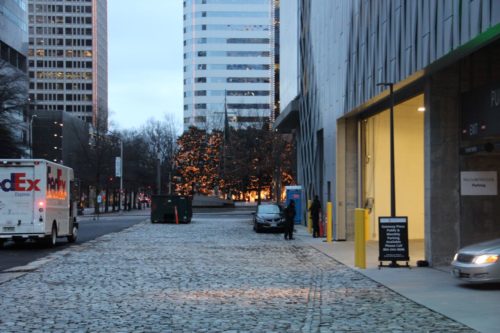



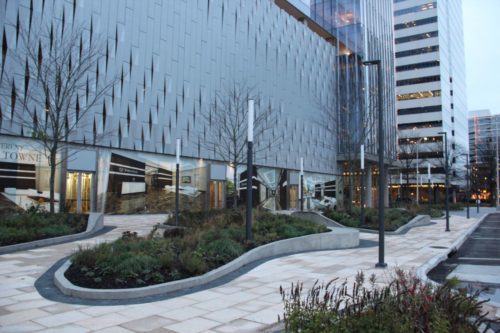
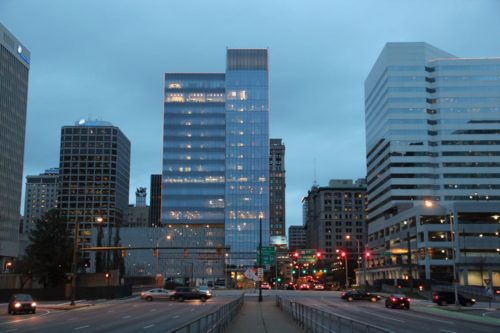
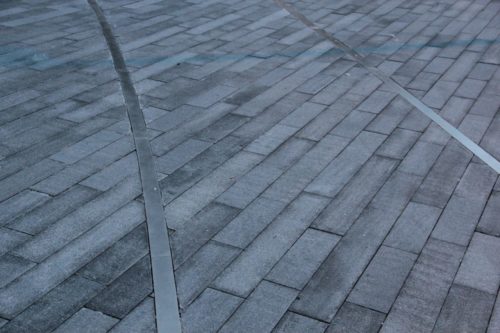
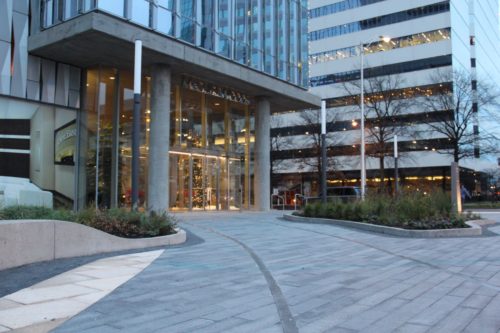
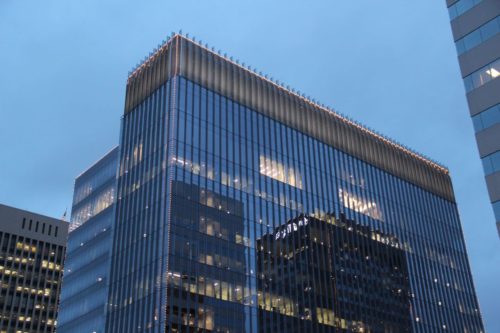
Write a Comment